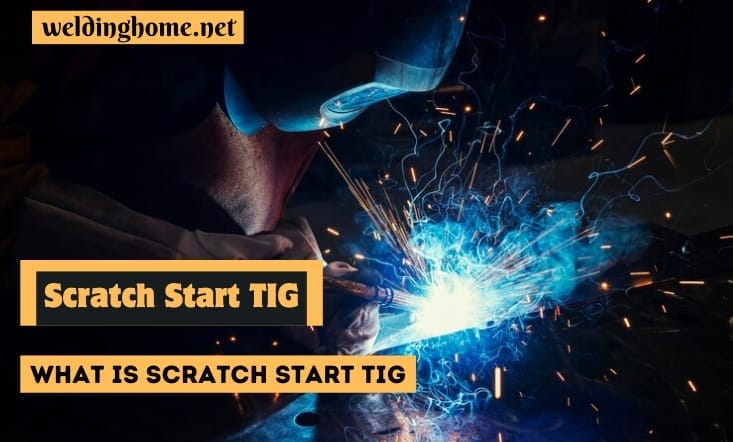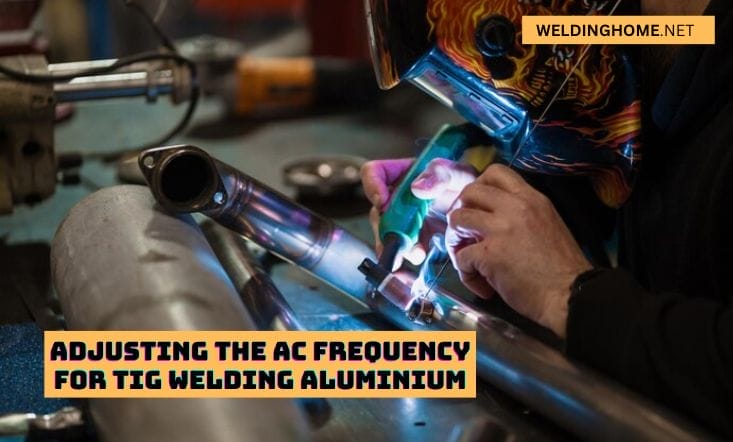How to TIG Weld Aluminum A Guide 2024

This is a beginner’s guide on TIG welding aluminum. You’ve come to the correct spot if you want to learn how to TIG weld aluminum. TIG welding, referred to as Gas Tungsten Arc Welding (GTAW), is a precise and flexible technique often used to combine aluminum. This instructional guide will take you through the necessary stages to properly TIG weld aluminum, whether you’re a potential welder or simply anyone interested in learning a new skill.
Because of its great qualities, aluminum is a lightweight and robust metal widely employed in various sectors, ranging from automotive to aerospace. Because of its unique properties, such as solid heat conductivity and low melting point, TIG welding aluminum necessitates special procedures and considerations compared to other metals.
This article will review the equipment, safety considerations, material preparation, and the step-by-step technique of executing a TIG weld on aluminum. I’ll have an excellent basis to begin your TIG welding aluminum adventure. Let’s start and learn about connecting aluminum using TIG welding.
What is the best way to TIG weld aluminum?
TIG stands for tungsten inert gas welding, and it is an ideal option when working with thin materials like aluminum. It is also suited for finishing metals like stainless steel, copper, and nickel-based alloys. In addition to providing superior control over the welding process, aluminum tig produces an aesthetically pleasing finish compared to other welding methods.
TIG Weld Aluminum involves striking a high-temperature arc between the tungsten electrode and the metal. This enchanting arc creates the weld puddle. The filler rod expertly completes the process and ensures a robust and durable bond.
In most cases, you must use a shielding gas to protect the weld from atmospheric contamination. Argon is the most commonly used gas for TIG Weld Aluminum, but other types of gases may be more suitable for specific applications.
Why is TIG Welding Preferred for Aluminum?
Aluminum is best joined with TIG welding because:
Exact Control: TIG gives you precise control over how much heat you put in, which is essential for the delicate qualities of aluminum.
Clean Welds: The procedure makes clean, superior welds with little dust.
Low Heat Input: The low heat input of TIG makes it less likely that metal parts will deform or twist.
No Spark: TIG does not require flux, so there’s no chance of pollution and no need to clean up after welding. It can be used with different sizes and types of metal.
Finest Filler Rods: Thin filler rods make accurate aluminum welds that look good.
Gas Shielding: The harmless gas shield keeps the atmosphere from entering the weld.
3. TIG Welder:
When selecting the best TIG welder for aluminum, look for a machine that can handle AC and DC power sources. Also, choose one with adjustable amperage settings to adjust to the correct welding parameters.
Additionally, having an automatic shut-off feature to turn off the electricity after every weld is completed is helpful. This prevents overloading the equipment.
Finally, look for welder models with ergonomic and lightweight designs since aluminum welding can be a physically demanding task.
Safety Precautions and Equipment

Precautions during TIG Weld Aluminum
Eye Protection: To save your eyes from UV and infrared rays, wear a welding mask with a shade for TIG Weld Aluminum.
Protective Clothing: Wear flame-resistant clothes, like a long-sleeved metalworking jacket, gloves, and pants, to protect yourself from sparks and heat.
Ventilation: To avoid breathing in fumes and gases, work in an area with adequate ventilation or use local exit air.
Ear defense: Use earmuffs or ear plugs to keep the noise from welding from getting into your ears.
Fire safety: Keep fire extinguishers nearby and remove anything flammable from your workspace to avoid fires.
Grounding: Ensure the workpiece and the welding tools are properly grounded to avoid getting an electric shock.
Electrical Safety: Electrical safety means checking wires and links for damage and using the proper devices to keep circuits safe.
Requirements TIG welding aluminum

TIG Welder: To weld metal, choose a TIG welder that can use AC power.
Tungsten Electrodes: You can use pure or zirconiated tungsten electrodes to weld aluminum, depending on your needs.
Filler Rods: To add more material during welding, you need the right size and type of aluminum filler rods.
Gas Cylinder: Use a cylinder of pure argon gas to protect yourself from sparks when welding.
Welding Torch: Put a proper collet and collet body on the torch so the tungsten electrode stays in place.
Welding Helmet: For TIG welding and good vision, choose a helmet with a shade that can be changed.
Protective Gear: Wear heat-resistant gloves, a welding jacket, and pants to keep sparks and heat from hurting your skin.
Grinder: To prepare the sides of the item, you’ll need a hero with a wheel made just for grinding aluminum.
Wire Brush: Clean the metal surface with a stainless steel wire brush before you weld.
Gas Flowmeter: Put in a flowmeter to control and keep track of the flow rate of argon gas.
Remember that taking safety measures and using the right tools is essential for TIG Weld Aluminum to go well and be safe.
Picking the Right Material for the Filler
For solid and reliable welds, choosing a suitable filler material is essential. The combination of the primary material and the replacement pieces should be the same for the best fit and bond strength.
How to set up a TIG welder
Set up your TIG welding machine based on the aluminum width and type of joint. Adjust the current, balance control, and gas flow to ensure the spark is steady and the weld penetrates correctly.
Conclusion
TIG Weld Aluminum requires precision and steadiness, but you can produce neat, long-lasting welds with the right tools and methods.
To avoid cracking or distortion, keep in mind to prioritize cleanliness, use the proper welding parameters, and regulate the heat input.
You can take on more challenging projects and produce stunning welds with accuracy and skill as you gain experience and confidence in TIG Weld Aluminum. Have fun welding!
FAQ’S
What are the settings for TIG welding aluminum?
In TIG Weld Aluminum, amperage is controlled with a foot pedal or fingertip control. However, setting the proper maximum amperage is best for the best results. For a 1/1ch inch aluminum, the amperage required is between 60 to 90 amps. If you have 1/8 inch aluminum, you need 125 to 160 amps.
Can you weld aluminum with a regular TIG welder?
Generally, two processes are used for TIG Weld Aluminum: GTAW (TIG) and GMAW (MIG). Most welders in the business will say TIG is the better option for welding aluminum because it allows for better results on lighter gauge materials. When done correctly, TIG welding aluminum can produce quality welds.
What type of TIG is used for Aluminium?
Two modes of TIG welding are Direct currents (DC), used for all metals except Aluminium and magnesium alloys. Alternating Current (AC) is used for Aluminium and magnesium alloys only.






